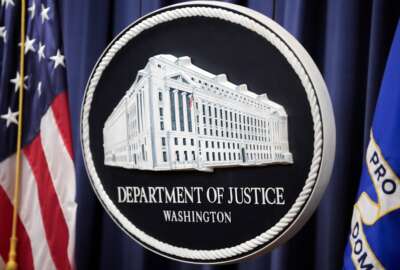FEMA surges fed responders to Florida ahead of Milton
FEMA is preparing for Milton's landfall while still responding to Helene's devastation. But Administrator Deanne Criswell says "FEMA is ready."
The Federal Emergency Management Agency has surged 1,200 search and rescue personnel to Florida ahead of Hurricane Milton’s landfall.
FEMA Administrator Deanne Criswell said more than 1,000 personnel are already in Florida. Many were already in the state helping with the recovery from Hurricane Helene and other previous storms.
“We have sent as many resources as we can into that area to support the efforts that the state has already pre-positioned into the area,” Criswell said.
In a fact sheet released today, the White House said 1,400 search and rescue personnel had been pre-staged to support Milton response efforts. Additionally, the Coast Guard has 1,300 personnel in Florida to assist with operations.
Meanwhile, Florida has mobilized more than 5,000 members of the National Guard to respond to the hurricane.
Milton is currently a Category 4 storm. The National Hurricane Center projects it will make landfall along the west-central coast of Florida on Wednesday night as an “extremely dangerous major hurricane.”
The storm is bearing down on Florida as federal personnel continue to assist with Helene response and recovery operations across six states. More than 8,000 federal personnel are deployed across the southeast, including Florida, to help with the Helene recovery and prepare for Milton’s arrival.
A daily operations briefing released by FEMA today shows just 8% of the agency’s incident management workforce is categorized as “available” ahead of Milton’s landfall. FEMA has struggled in recent years to maintain a workforce large enough to respond to a growing number of natural disasters.
But Criswell pointed to the agency’s “layered approach” to staffing disasters. In addition to its dedicated disaster response staff, FEMA will also call on employees from its headquarters and across different regions to “pitch in and help out when we need additional support.”
“We’ve done this before. We are prepared for this,” Criswell said. “We will certainly have challenges along the way as we move people around, but this is what we’re good at. This is what we plan for.”
Criswell said FEMA’s response to Milton will not detract from its Helene efforts.
“Let me be clear: these resource movements are not taking away from the ongoing, complicated response and recovery we are still working in the aftermath of Helene,” she said. “I want the people to hear it from me directly: FEMA is ready.”
Homeland Security Secretary Alejandro Mayorkas last month also activated the Surge Capacity Force. It provides FEMA with a roster of volunteer employees from across federal agencies.
FEMA’s daily operations briefing shows more than 7,800 people are rostered on the Surge Capacity Force, with 190 of those currently deployed.
FEMA funding
Criswell said FEMA’s Disaster Relief Fund had $11 billion in its coffers as of Tuesday morning. Out of the $20 billion in the fiscal 2025 continuing resolution, Criswell said FEMA has already spent between $7-8 billion on obligations for disaster recovery projects that were previously paused due to a shortage of funding.
The rest has been spent on the ongoing response to Helene and Milton.
Earlier this year, FEMA sent Congress a $9 billion supplemental disaster funding request. Criswell said that request “still stands,” but added that FEMA is also evaluating whether it will need a bigger supplemental funding boost after Helene and Milton.
“As we have continued to have an increase in the number of events, and these two back-to-back, really catastrophic events that are going to cost a lot of money, we are evaluating right now how much more we are going to have to go back and ask Congress for,” Criswell said.
FEMA is currently supporting 111 major disasters and 17 emergency declarations, according to the daily operations briefing.
Criswell said it’s the most ongoing disaster responses she’s seen while at FEMA.
“We had an incredibly busy tornado season earlier this year,” Criswell said. “We had severe weather that had catastrophic and historic levels of flooding across many states this spring as well. We’ve had wildfires across much of the west. This increase in the number of severe weather events we’re seeing, as well as the complexity of many of these events, because of the amount of damage that they’re doing, is increasing the number of open disasters, because the recovery is more complex and it takes longer to help reimburse these communities as they rebuild from the weather events that they have experienced.”
Copyright © 2024 Federal News Network. All rights reserved. This website is not intended for users located within the European Economic Area.
Follow @jdoubledayWFED






